
In April 2022, Halifax Public Libraries announced a Call for Applications for its new Artists & Innovators in Residence program and received many outstanding submissions. We are thrilled to be sharing news of the talented individuals who will be serving as Artists & Innovators in Residence, and are signing on to share their talents and ideas with our wider community in the months to come.
Follow along here, for the latest news and announcements in the series.
Introducing Christine Hempel
Artist & Innovator in Residence, 2022-23
Last updated June 2023. This blog post will be kept up-to-date with Christine’s latest work and events across all Library branches, collaborations, and ideas. Check back often!
Click to jump to section:
- About Christine
- Vision: Live Well Together, Play Well Together
- The Design with Nature, Design with LEGO Project
- How do I take part?
- Upcoming Events
-
Outcomes: Your Creativity Galleries
-Using LEGO to Get Creative About Suburban Community Hubs | Woodlawn Public Library, October 2022
-Before & Afters | Halifax Central Library, June 2022
-People Power: The Greta Effect, May 2023
-Live Well Together: Library Conversations About Housing, June 2023
About Christine

Christine is an urban designer, teacher, researcher and illustrator with a passion for building engaging, ecologically-responsible, and beautiful communities.
She works creatively with developers, citizen groups, researchers and students to envision ways to transform landscapes, buildings, neighbourhoods and cities into engaging, beautiful and sustainable places. Recently, she has added LEGO to her communication toolkit to create an Eco-City exhibition in Denmak. She now brings this exciting concept to Halifax with the Design with Nature, Design with LEGO initiative [links to below].
In Halifax, she will focus on engaging with community members of all ages on topics of eco-city building, affordable housing, and place-making.
“Libraries are perfect places for city building, because they tend to be the heart of the cities and communities where they live.”
Christine graduated from the University of Waterloo in 1991 with a degree in Architecture. Over the next two decades, she ran a busy architectural illustration practice in Owen Sound, Ontario, with local and international clients. She and her husband Ralph raised three sons, learned to garden, and undertook renovation projects that were always more complex than they first seemed.
Christine became increasingly involved in volunteer work to strengthen citizen engagement, develop community resilience, and build sustainable landscapes, leading to an illustrated newspaper column. Wishing to steer both advocacy efforts and professional development to sustainable community design, she obtained a Master of Planning from the University of Guelph in 2010, with a research focus on compact urban development, and pursued her doctorate between 2010 and 2017, with a research focus on landscape perceptions, and processes that strengthen community involvement in regional planning for wind energy.
In 2017 she and her husband moved to Denmark, and while he pursued his dream of working for LEGO, Christine worked on design projects, and conducted research projects on housing, and on children’s play environments.
She joins Halifax Public Libraries for approximately one year, June 2022-23, as Artist & Innovator in Residence. She will travel across all Library branches throughout the year with her Design with Nature, Design with LEGO initiative, hosting pop-ups, discussions on a range of topics, and learning from community to shape and unveil a final Live Well Together, Play Well Together exhibit. Read on to learn more about how to get involved!
Follow Along
- Find Christine on Instagram at @TheLibraryLEGOLady.
- Follow #AIIRHfxPubLib on Instagram and Twitter for the latest posts.
- Explore Christine's website, opens a new window
Vision: Live Well Together, Play Well Together

Christine’s goal is to inspire the Halifax Regional Municipality to Live Well Together with a thoughtful and creative program based out of its Libraries.
Deeply inspired by the legacy of Scottish-born urban planner, Ian McHarg, and his book Design with Nature, opens a new window, Christine’s work will draw attention to, and help inspire solutions for, some of the key issues raised by McHarg.
“Throughout history, human societies that have been built on sustainable relationships with nature have succeeded, while those that worked against natural systems have collapsed. Human societies have altered ecological systems profoundly, and the consequences are disastrous: species extinction, global warming, depletion of resources. City makers are now challenged to better understand and adapt to rapidly changing environmental systems. We must envision cities and landscapes that function with rather than against nature.”
Christine strives for a world where we create beautiful, healthy, and just cities that work in harmony with natural processes. In today’s era of global climate change, she believes McHarg’s message is more relevant than ever.
Key concepts

Christine’s Library presence, workshops and partnership-building will encourage thinking and creativity around the following concepts.
- Healthy Trees and Forests: Natural forests beyond urban boundaries, conservation and preservation, curbing urban sprawl, recreation and access, climate mitigation, and more.
- Caring for our Water: Purification, constructed wetlands, filtration and phytoremediation, mitigation of flooding and soil loss, dune ecosystems, and more.
- Movement, Recreation and Relaxation: Urban mobility, trail systems and linked gardens, connectivity beyond the city, restorative landscapes, nature and health, and more.
- Connectivity and Animal Migration: water level, ground level, and tree canopy connections; shelter and foraging, safe crossing points, habitat requirements, connecting rural ecosystems with urban spaces, pollinator habitats, and more.
- Everyday Nature: Building bonds between people and nature, teaching and learnig opportunities for human/wildlife interaction, health and landscape therapy, and more.
- Urban Agriculture: Food forests and edible landscapes, community gardens, urban farms and markets, and more.
- Creating an Environment Together: Social fairness and equity, affordability, designing fair cities, collaboration, and more.
The Design with Nature, Design with LEGO Project

Christine is going to be using LEGO to help us translate community issues into visual, flexible, interactive conversations and constructions.
“We’ll be able to take principles that are often considered high-level or academic, and take about them on many levels—with adults, teens, and kids—in a hands-on way,” she says.
What to expect
When you visit a Library branch over 2022-23, you may see Christine, along with her pop-up LEGO display, in any location.
Christine’s illustrative and teaching skills lend themselves well to engaging with different audiences, as seen below in her Green Team to the Rescue comics! (click to expand)
Through her Design with LEGO, Design with Nature travelling initiative, Christine will be:
Activating Library and community spaces.
By engaging with Library visitors on-the-fly through office hours and drop-in conversations, as well as hosting planned programs you’ll be able to find here and in our What’s On calendar.
We’ll keep this blog’s Upcoming Events [linking to below] section up-to-date with her latest location schedule and events, so you can check back often.
Supporting community and staff learning.
By hosting guided tours and knowledge-sharing walks throughout HRM, sharing educational materials, writing and speaking, and bringing city builders together. All events and education will be accessible for all abilities, interests, and English-language levels. Christine will also be providing special training for Library staff members.
How do I take part?
- Check out Christine’s schedule and events below and be sure to visit your local branch when she is present to chat and Design with Nature, Design with LEGO!
- If Christine is currently set up at your local branch, you can visit to check out her LEGO model (seen above at Halifax Central Library in June 2022), and maybe even free-play with LEGO or chat with Christine. Christine’s initiatives are for all ages; some will be designed for kids, teens, adults, or All Ages.
- Check back here often for news and more opportunities. And, in Spring 2023, we will share Christine’s final Live Well Together, Play Well Together exhibit information.
Upcoming Events & Pop-Ups
Check out upcoming official events on our calendar, and pop by any time during the following dates to see Christine's work in action!
September 20, 2022-January 4, 2023| Halifax Central Library
Pop by the second floor to find Christine and her display at Halifax Central Library for a variety of workshops, free-play, and discussions.
Outcomes: Your Ideas
Here, we’ll be sharing some of the ways you, our community, has engaged and shared ideas with Christine, through the Design with LEGO, Design with Nature initiative.
Using LEGO to get Creative About Suburban Community Hubs | Woodlawn Public Library, October 2022
Click through to view the presentation!
Before and Afters | Halifax Central Library, June 2022

The Eco-City demonstrates ways that a city can be designed and built by working with natural systems. In drop-in workshops, we take on different design challenges and think about ways that natural communities can live together with people. By working with LEGO bricks, workshop participants can share their ideas.
1. Redesign an apartment building
In the first scene (click through image gallery above to expand and view), we see an apartment building with a few design problems. Why is nobody is using the balconies or roofs.? There are plenty of people to look after the yard, but they are all mowing the lawn.
Clipped grassy lawns can be lovely, and it’s nice to have a place to have a picnic, but do we really need so many of them?
Our Solution:
Our team worked to improve the building for the people and pets living there, and more habitat for wildlife too. Adding to the lawns, trees, shrubs and grasses were planted for the birds and insects. A water fountain and small pool were created, and a place was built for a horse to live, (with food planted for him to eat). Window boxes were planted with flowers and vegetables, and ivy and other plants are growing on the walls to help cool the building in summer and provide homes for other critters. Our team made a staircase to the roof which is planted with special plants, and is now a place to enjoy with flowers, solar panels, and an umbrella for shade. The roadway was replaced because our residents like biking and walking instead of driving.
2. Redesign a highway crossing
The first scene in the gallery above (click through to expand and view) shows a roadway that is dangerous for animals to cross. The snake is about to be run over! Birds and mammals in the forest cannot migrate across to look for food or find mates, and the road blocks a stream from easily flowing from one side to another. We need to think about traffic design for cars, but also for people who walk, and wildlife of all kinds to travel safely.
Our Solution:
Our team came up with many creative solutions to our traffic problem. Check out image # 2. First, the road was designed to rise up and over the creek, which could flow under and allow fish, frogs, snakes and small mammals an easy way to migrate in safety. Our builders also constructed a bridge over the road so that larger animals and people could connect the forests together. the bridge is planted with shrubs and grasses and there are some solar panels for electricity. A safe crossing area was constructed so that hikers can stop traffic with gates when they wish to cross the road.
3. Incorporate a buried stream
These houses (in gallery image #1 above) share a parking area between their houses. Unfortunately, the paving covers up a stream, and when streams are covered by buildings or pavement, the water quality becomes very low, no children can play there, and no wildlife can thrive .
Our Solution:
Our builders collaborated to make creative changes to the landscape. By sharing a car, they were able to relocate a parking space and remove the pavement completely. They restored the landscape near the stream with trees, shrubs and grasses, which improve water quality. More animals and people now enjoy the yard. A crossing was created for animals to safely cross the road, and the stream was expanded in an imaginary way with a waterfall and park. The setting also includes a lake, where people fish and swim. Solar panels and a satellite dish were added to the homes, which are now active with people, pets and birds.
During our drop-in workshops, some participants prefer to work on their own scenes. Check out this gallery of creative ideas!
People Power: The Greta Effect
May 2023 Update
The Design with Nature, Design with LEGO exhibition has moved to Halifax North Memorial Public Library! We have had some wonderful creative events so far this spring, with more to come.
On Earth Day, visitors of all ages learned a bit about how cities can be designed to work with healthy environmental systems. We built some inspiring creations to show how we can make earth-friendly changes whether we are thinking about solutions for our own homes, city neighbourhoods, or large rural areas.
Clara’s playful creation showing activist Greta reminds me that young people have played a pivotal role in bringing environmental awareness to the forefront, and inspiring real and significant change.
Earth Day was originally created by active environmentalists and politicians who teamed up with students to create events that draw attention to some of the biggest environmental polluters in the 1960s and 1970—much of it inspired by a book published in 1961 called Silent Spring by Rachel Carson that drew attention to environmental degradation in North America. Earth Day often referred to as the beginning of the Environmental movement in North America.
Rachel Carson was a scientist (a marine biologist) by training, but her research led her to become a full-time nature writer and conservations. When her research showed the harms that pesticides were doing to our natural world, she published Silent Spring in 1962, and her knowledge was shared with an astounding number of ordinary people. Because of her book, DDT and other harmful pesticides were banned.
This is the case with so many activists and changemakers. Their interests lead them to discover something in their field, but they need to write, or speak publicly, or hold protests in order to reach enough people to actually make change.
Greta Thunberg started her activism at the age of 15, where she spent Fridays sitting outside the Swedish Parliament to call for strong action on climate change. The award-winning teen’s influence across the world has been described as “The Greta Effect”.
This month we will celebrate People Power. Stay tuned for our upcoming post: “The Jane Jacobs Effect”.
Live Well Together: Library Conversations About Housing
June 2023 Update
Bringing the Artist-and-Innovator-in Residence (AIIR) program - Live Well Together/Play Well Together - to various Library branches has been amazing. I enjoy teaching city-building concepts at workshops and Lego play-and-learn sessions… but I am learning too. As a newcomer to Halifax, I've been immersed in my "Halifax 101" program to better understand this city, its history, and the potential for future communities.
The Power of Libraries in Fostering Community Connections
From community members, from library events, and from books and archives, I learned a great deal about how history and housing are intertwined, and in May, from Halifax North Memorial library, I led a Jane's Walk, alongside local resident Treno Morton. This became an opportunity to create a walking conversation that wove together new learnings and new projects with local knowledge and historic events. These library spaces serve as essential hubs for mutual learning and understanding, forming the cornerstone of fostering a harmonious community.
Highlighting Community Challenges: The Plight of Africville
During the Art of City Building conference at Halifax Central Library in September, I had the privilege of witnessing remarkable presentations envisioning the future of Halifax. However, Treno Morton's speech left a profound impact on me. Raised in Uniacke Square, Treno shed light on his community's long-standing struggle with displacement, where racism has influenced planning and civic governance decisions. The demolition of Africville in the 1960s and the subsequent expropriation without compensation serve as documented examples of these injustices (refer to www.africvillemuseum.org, opens a new window for more information).
The Hidden Face of Displacement: Gentrification and Erasure
Halifax's enthusiastic embrace of modernism during the urban renewal era resulted in the destruction of established communities to make way for highways, high-rise buildings, and commercial centers. Unfortunately, even with recent formal apologies from leaders, erasure persists. One distressing incident involved the oblivious painting over of a community-led mural on Creighton Street and Charles Street by city road crews a few years ago. The construction of expensive housing developments on sites that were once affordable apartments in the North End has led community members to dub recent gentrification "Africville 2.0."
A Glimpse into the Future: The Cogswell District Project
Treno showcased the proposed Cogswell District Project, a high-density housing development intended to replace the ill-fated Cogswell interchange, an infrastructure project synonymous with past displacement. He raised concerns about whether this future development would include homes for members of his community. Exploring the connection between historic displacement in the Cogswell neighborhood and the prospects of emplacement for low-income residents today became a focus for my program at Halifax North.
Many of you have extensive knowledge of the project, but for others like me who are new to it, a superb (and short) video presentation has been made by Planifax:
Understanding the Context: Gordon Stephenson's Legacy
Through my exploration of the Library archives, began to understand the significance of Gordon Stephenson’s work in Halifax. He was an architect inspired by modernist principles, and in 1957, he devised a plan for slum clearance in Halifax, complete with maps indicating areas of "social and economic difficulties." These maps marked individuals on welfare or children appearing in juvenile court, which ultimately fueled Stephenson's recommendation for a comprehensive urban renewal initiative, funded by all three levels of government, and referred to by many as "Blight Removal". Throughout the 1960s, thousands of homes were demolished. Some found new housing in projects such as Mulgrave Park, but hundreds of poor families were displaced to other parts of Halifax to fend for themselves, or simply erased from known records.
Table 2 (Click to expand) Stephenson's maps of urban difficulties.
Left: Welfare and housing. Centre: Children and their troubles. Right: detail of Welfare and Housing. Source: Halifax Municipal Archives.
Bridging the Gap: Connecting Historical Dots to the Present
To gain a deeper understanding of the significance behind these maps, I translated the dots onto aerial photographs of the present and future Cogswell Project. Visualizing their impact graphically further emphasized the scale of the challenges faced.
Table 3. Graphics translating Stephenson's dots. Artist's concept
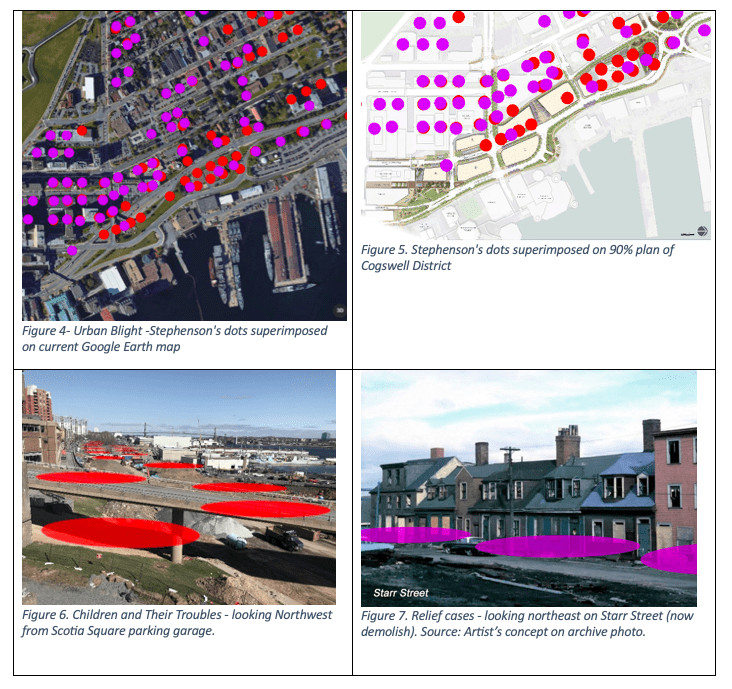
Jane's Walk: Honouring the Legacy of Jane Jacobs
Renowned urbanist Jane Jacobs criticized urban renewal programs in her influential 1961 book The Death and Life and Great American Cities. Even as the Interchange was being constructed, Halifax residents began to protest against the destruction of the city fabric in preparation for a new Harbour Drive. In 1970, the highway project was halted, before it destroyed what remained of Halifax’s now-beloved harbourfront. We commemorate citizen actions every year through Jane's Walks, including our own walk in Halifax on May 6th. Our aim was to initiate a conversation about the past, present, and future of the Cogswell District.
For more information about Jane’s Walks, visit their Facebook page, opens a new window.
Uncovering the Layers: Exploring Displaced and Preserved Housing Sites
Starting at the Library, our Jane's Walk took us on a tour of the neighbourhood, armed with maps indicating both demolished and preserved housing sites. We examined the restoration of Portland Place, previously known for housing troubled children, which has now become a rental home. Treno expressed his concerns about the lack of meaningful public engagement in the redevelopment process, specifically regarding St. Patrick's School.
Cogswell District Redevelopment: Bridging Divides and Posing Questions
Our walk wasn't restricted to traditional paths. Through parking garages and pedways, we explored the ongoing reconstruction of the Cogswell District, contemplating its future. The new project represent a remarkable achievement by planners and city leaders who recognized the failure of the interchange. It presents an opportunity for the city to heal the deep physical and emotional divisions between the South End and the North End. However, important questions about land use and land ownership, the inclusion of essential amenities like grocery stores, and the affordability of housing for marginalized communities remain unanswered. Achieving diversity within the development requires careful consideration and planning.
Moving Towards True Emplacement: Addressing Affordability and Inclusion
Despite extensive public planning and design efforts dedicated to the Cogswell District Project, meaningful municipal dialogue about affordability and inclusion have been evaded. Land divestment remains a sensitive issue that planners and council members say they will address in the future. Some argue that maximizing profits from property sales is essential, and affordable housing can be achieved through density bonusing or inclusionary zoning. However, such strategies often result in very small units, excluding families. To genuinely address the historic displacement in the Cogswell district, more substantial measures must be taken, such as donating land, providing construction grants, or establishing long-term rent subsidies. Without a profound commitment to these actions, lower-income African Nova Scotian families will struggle to find true emplacement.
Looking Ahead: The Role of Government and Continued Conversations
Perhaps, to facilitate a transition from displacement to emplacement, we need more extensive discussions. The involvement of all three levels of government is crucial for Halifax to break free from the patterns of the past and create inclusive communities.
Digging Deeper: Exploring the African Nova Scotian Community's History
For those interested in delving into the extensive history of displacement faced by Halifax's African Nova Scotian community, I recommend reading Ted Rutland's book, Displacing Blackness: Planning, Power, and Race in Twentieth-Century Halifax. Copies are available for browsing at Halifax Public Libraries' Central Library and Halifax North Memorial Public Library.
Conclusion
Library events and initiatives serve as catalysts for housing conversations and community engagement. Through exhibitions, workshops, and Jane's Walks, we can unearth the profound impact of displacement and advocate for true emplacement. The ongoing development of the Cogswell District presents an opportunity to learn from the past, and look forward to a vibrant, inclusive future where residents of mixed incomes and diverse backgrounds can live well together.



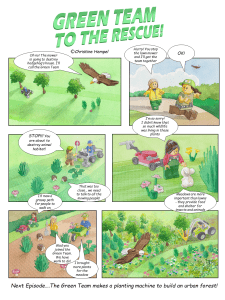
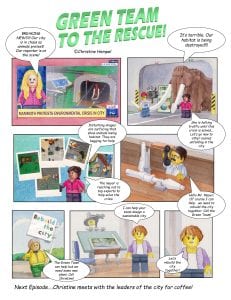
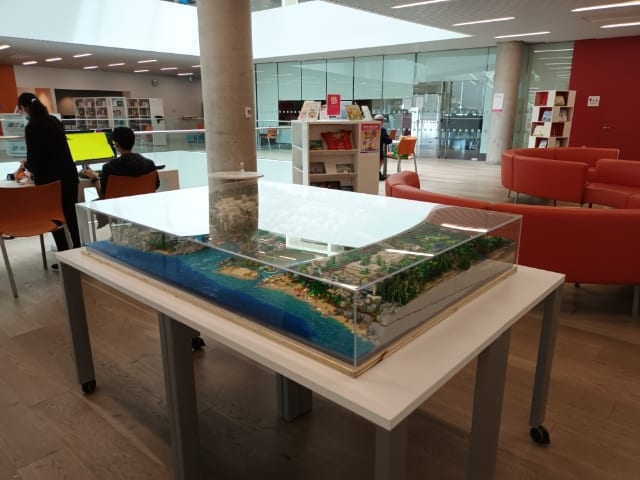

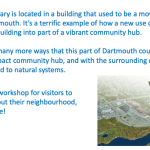
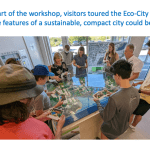

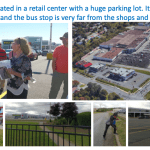
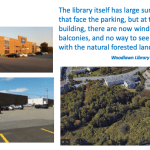
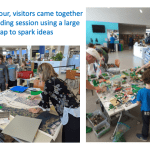
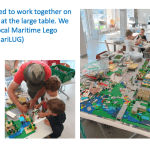
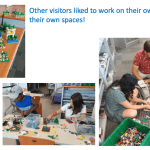

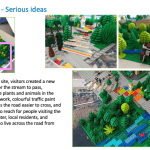
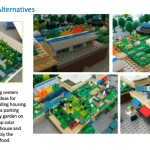
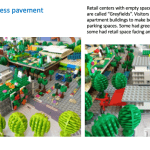
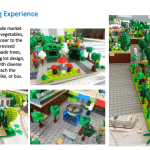
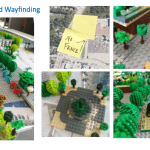
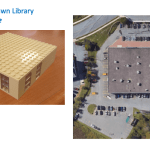
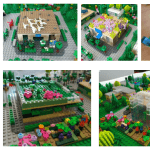
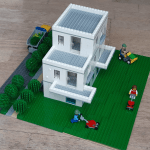
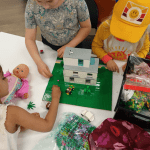
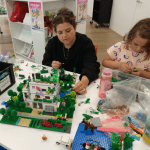


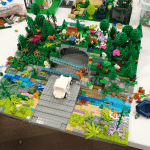
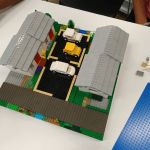

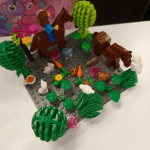
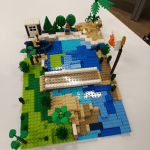


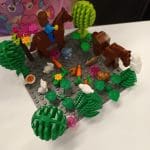
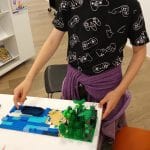
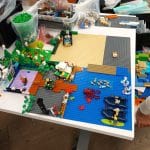
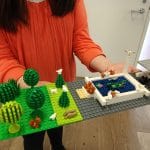

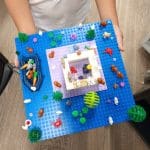
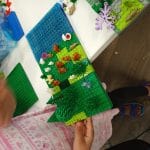
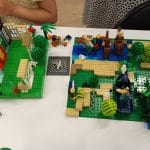
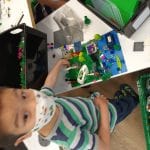



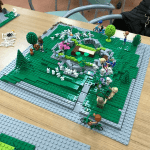
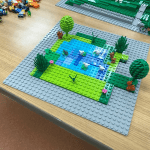

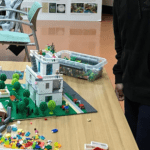
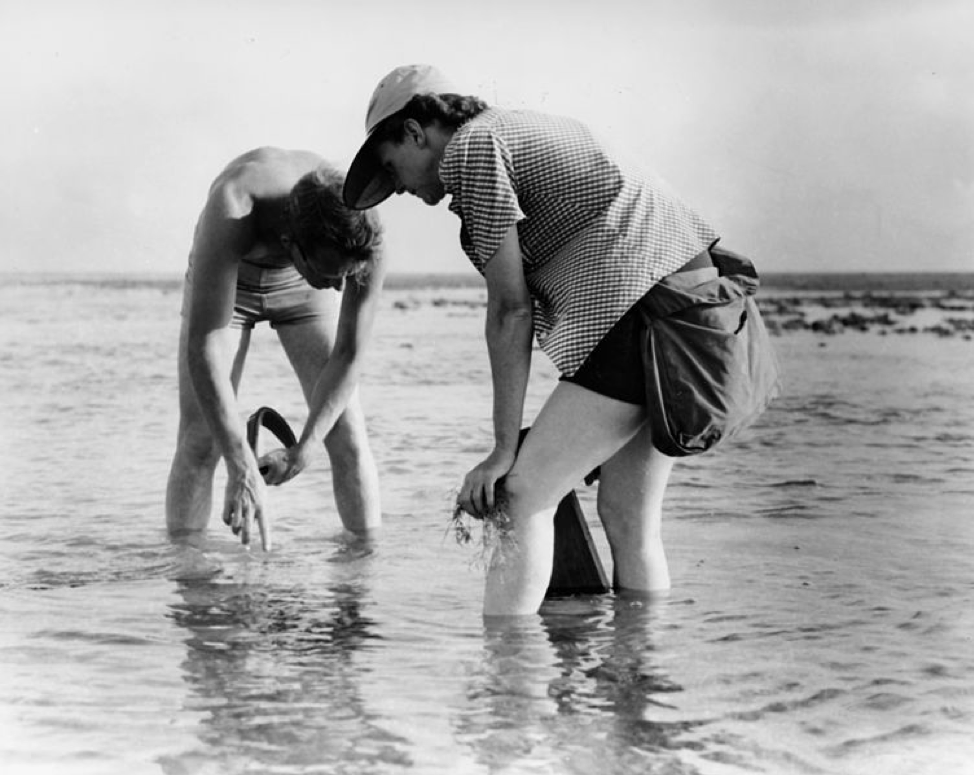

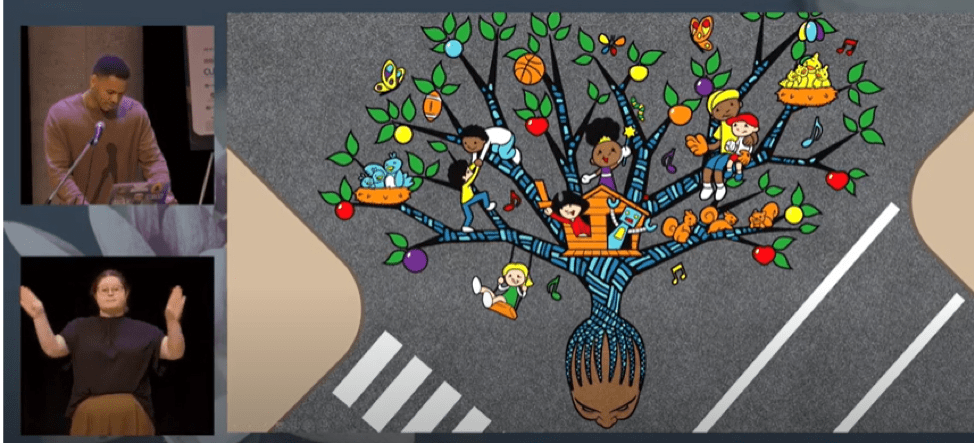

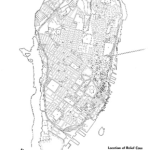
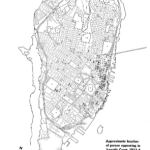
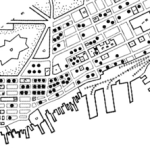

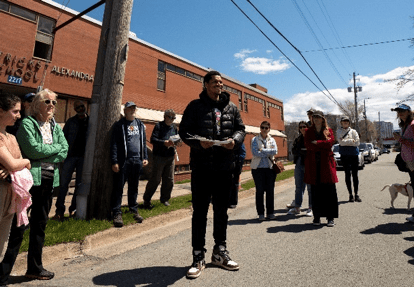



Add a comment to: Artist & Innovator in Residence: Christine Hempel, Design with Nature, Design with LEGO